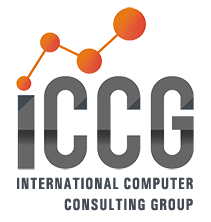Digital disruption is the new normal. And, as part of their digitalization journey, manufacturers now have a whole spectrum of modern tools to embrace. Greater agility is often touted as one of the important benefits of these digital tactics. Greater speed is a coveted prize, sought after by manufacturers since the era of Henry Ford’s assembly line.
Now, though, responding to change with lightning fast reflexes is not enough. Manufacturers must anticipate future trends and strive to predict customer demands before the customer even has acknowledged the need. Being the first in a market pace is often the key to owning it.
So, having a view of tomorrow is now more important than ever. Today we call it predictive algorithms and data science. We strive to speed product releases and adopt new features as quickly possible. Accelerating speed in one department drives the need for acceleration in other departments. The continuous rush of change, when not controlled, can start to resemble a hamster spinning in its wheel—but getting nowhere. Without meaningful objectives, speed for the sake of speed starts to become fruitless.
As manufacturers undertake digital initiatives, they should pause and consider the ongoing quest for speed and understand its true value. It’s important to be cautious about blind, over-emphasis. Speed has its risks, from higher levels of errors, quality issues, and a workforce that isn’t trained on new policies or processes. There is a fine line between efficient decision-making and rash, knee-jerk responses which can take a company down circuitous routes, far from the prime objectives. In fact, some would contend that reactionary measures lacking cost analysis and thorough financial impact study are simply reflexes, with a 50-50 chance of being right or wrong.
How did we get here?

Veterans of manufacturing remember apprenticeships, training programs, and job shadowing to pick up the tips and tricks of an “old-timer” who could teach new recruits how to keep on-schedule. There were no manuals, no automated workflows, and timestamps on batches. But there was a big clock on the wall and foreman with a clipboard and a stern frown. Sometimes, an efficiency expert would be brought in, along with his stop watch and zeal for time studies, task analysis, and eliminating worker breaks.
And, yet, we were incredibly slow, by today’s standards. Technology has continuously redefined a timely response, expectations for turn-around times, and what constitutes a highly productive work day.
Even business-to-business commerce is fast-tracked. Our experiences as consumers seep over into our B2B worlds, too, shaping expectations. Our smart phones, tablets, and plethora of apps give us instant gratification as we hit “enter” and “purchase” and know exactly when we can expect delivery.
Does such speed of response apply to engineers specifying custom dimensions for major industrial equipment, like generators or brake assemblies? Can a Made-to-Order forklift be on its way to the buyer in a matter of days, not weeks? Do we want mission-critical equipment–like medical devices or mining equipment–to be fast-tracked through testing and inspections, perhaps cutting corners all for the sake of speed? Perhaps not. Some things shouldn’t be rushed.
Whoa, Nellie
Break-neck levels of speed without cautionary restraints or restricted parameters can be hazardous. Jumping to fulfill every customer’s request can destroy margins. The same is true with levels of speed. At some point, acceleration exceeds the ROI. The key is that someone in the organization must know where that point is and make sure the ongoing effort to speed processes retains value and translates to positive gains.
Today, we use the term “agility” as we talk about making pivots toward new markets, adjusting the supply chain in response to weather patterns, and anticipating what tomorrow’s customer will want before the customer has even thought about it. Agility implies the ability to move quickly—while retaining a firm footing and some degree of grace. It is not rushing at full speed. It is not blindly jumping on every fad. It’s the difference between a marathon racer running at full force from the starting line to the one who paces himself to run the full race consistently.
Diving into a new niche market or rushing to invest in a trendy product line without proper due diligence is high-risk. Technology tools which generate data and forecast trends can help simplify decisions, but they cannot eliminate the need for strategy. Restraint is sometimes required. Discipline to not chase every rainbow or opportunity is essential in today’s landscape which is exploding in bursts of ideas.
How fast is too fast?
Every manufacturer must find its own balance of agility, acceleration, automation, and constraint—to conform to its growth priorities. Perhaps building customer loyalty–no matter the cost—is an investment the company is willing to make—at least for a certain time.
Many technologies have built-in safeguards to keep “fast” answers from being the wrong answer. For example, Configure Price Quote solutions, which help steer users through personalized design options, also have limitations built-in so the user cannot exceed safety or engineering parameters.
The main take-away is that manufacturers should accelerate to keep pace with market demands—but not abandon strategic planning and analysis of the bottom line impact. A strategy is always essential, even if means making the whirlwind of activities pause—just for a minute

